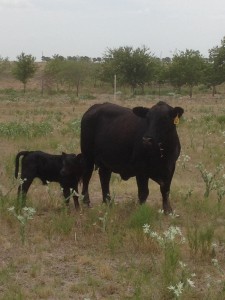 Most producers think they know what’s what when it comes to body condition and body condition scoring (BCS). But, that’s not always the case.
Most producers think they know what’s what when it comes to body condition and body condition scoring (BCS). But, that’s not always the case.
Our extension group conducted several clinics at sale barns where we asked producers to estimate cattle weight and body condition scores. What we found surprised us – and them. Many missed weights by as much as 200-300 lbs. and BCS by two full scores.
It’s easy to misjudge body condition, especially in the winter, when hair obscures flesh. But, it’s critical to the health and profitability of your herd pay close attention to body condition.
Adequate body condition is essential not only to successful calving, but also to colostrum production, which translates into healthier calves with higher weaning weights. Further, it correlates directly to prompt estrus cycling after calving, which has a direct effect on pregnancy rates. In a study we conducted, cows with a BCS of 4.5 had a 48 percent cycling rate, compared to a 59 percent pregnancy rate for cows with a BCS of 5. A BCS if 5.5 yielded a 72 percent cycling rate and a BCS of 6 delivered 80 percent or better.
Prompt cycling after calving after calving is a key element in any profitable breeding program. Earlier cycling results in earlier calves, calves that have more time to grow and develop prior to sale, giving them a tremendous weight advantage.
So, part of the whole profit picture is to not only get the calf on the ground, but also get it delivered early in the calving season and have the cow bred back early. In a perfect world, you want to have 2/3 of your calves born in the first 21 days of the calving period, which means you have to have them bred in the first 21 days of the breeding period. They won’t breed if they aren’t cycling and they won’t cycle if they aren’t in proper body condition.
Keep in mind that you pay the same amount annually to keep the cow, but she’ll pay you much more if you can get her to breed and calve early.
I recommend producers score their herd every month. Take a notebook and make a column for BCS 3, 4, 5, 6 and tally the scores of each cow in the appropriate column. When finished, you have a picture of how your herd is doing.
If you need to move them up one BCS, feed them enough to gain 80 lbs. each. You cant do that in late gestation; you must be doing it all winter. And, you have to look past the winter hair to see what’s really happening. When in doubt, put them through a chute and feel them.
If you need help on proper body conditioning scoring, your university extension office can assist. There are also online charts – even mobile apps for your smart phone. BCS is tied to so many things, you simply can’t afford to ignore it.
- 1. Stevenson, JS, Johnson, SK, and Milliken, GA. Symposium Paper: Incidence of Postpartum Aanestrus in Suckled Beef Cattle. The Professional Animal Scientist, 19(2003):124-134.
Lary Hollis is extension beef veterinarian and professor of beef cattle management and nutrition at Kansas State University
